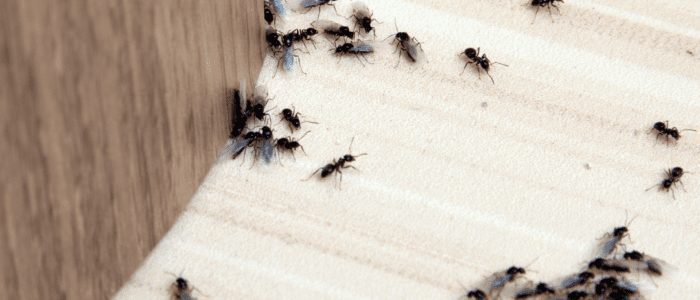Common Ant Species in Orange County, NY (And How to Identify Them)
Ants are some of the most common insects found in Orange County, NY. While they may appear harmless, certain ant species can cause serious damage to homes, contaminate food, or even pose health risks. Understanding the most prevalent ant species in this area and knowing how to identify them can help you proactively manage their presence and prevent infestations.
This blog will walk you through the types of ants commonly found in Orange County, how to identify them, and effective ways to protect your home.
Why Should You Know About Ant Species in Your Area?
It might surprise you to learn that there are over 12,000 species of ants worldwide, many of which live in the United States. Orange County alone is home to several types that vary in size, behavior, habitat, and potential risks. Whether it’s invasive ants damaging wooden structures or tiny trail-following ants in your kitchen, recognizing them is the first step toward implementing the best pest control measures.
Now, let’s explore the most common ant species you’re likely to encounter in Orange County, NY.
1. Carpenter Ants
How to Identify Carpenter Ants
- Size: ¼ to ½ inch long (one of the largest ants you’ll encounter).
- Color: Usually black, but some species may have reddish or yellowish-brown hues.
- Shape: Polished abdomen and a rounded thorax.
Behavior
Carpenter ants are particularly troublesome because of their habit of hollowing out wood to create nests. Unlike termites, they don’t eat wood but instead tunnel through it, leaving behind sawdust-like debris called frass. You might find them near structural wood, damp areas, or tree trunks.
Potential Risks
If left unchecked, carpenter ants can cause structural damage to your home by weakening wooden frameworks.
Prevention Tip: Repair leaks and store firewood away from the house. Regularly inspect wooden materials for signs of damage and frass.
2. Pavement Ants
How to Identify Pavement Ants
- Size: Around 1/8 inch long.
- Color: Brownish-black.
- Distinct Features: Parallel grooves or ridges on the head and thorax.
Behavior
Pavement ants usually nest under driveways, sidewalks, and foundations, leaving small piles of dirt at their entry points. Despite their name, they can also invade homes, especially kitchens, in search of food.
Potential Risks
While generally harmless, pavement ants can become a nuisance when they discover access to pantries and food storage areas.
Prevention Tip: Seal cracks in your home’s foundation, and clean up food crumbs and spills immediately to avoid attracting these ants.
3. Sugar Ants (Odorous House Ants)
How to Identify Sugar Ants
- Size: 1/16 to 1/8 inch long.
- Color: Brown or black.
- Distinct Feature: They emit a rotten coconut-like smell when crushed.
Behavior
Sugar ants, or odorous house ants, are one of the most common indoor pests. True to their name, they are drawn to sugary foods but will also eat protein-based items. They often create trails from food sources to their nests, which are sometimes hidden in wall voids.
Potential Risks
While they aren’t directly harmful, their scavenging can contaminate food. The odor they emit when threatened can also be unpleasant.
Prevention Tip: Store food in airtight containers and regularly clean countertops and cabinets to prevent infestations.
4. Pharaoh Ants
How to Identify Pharaoh Ants
- Size: 1/16 inch long (very tiny).
- Color: Yellowish-reddish with dark markings on the abdomen.
- Distinct Feature: Almost translucent appearance.
Behavior
Pharaoh ants prefer warm, humid environments and are often found in kitchens, bathrooms, and laundry areas. They are notorious for their resilience, creating multiple interconnected colonies.
Potential Risks
Pharaoh ants are known for contaminating food and may even spread bacteria like salmonella. Their colonies can quickly grow out of control without proper treatment.
Prevention Tip: Eliminate moisture and use baiting techniques to control pharaoh ant populations.
5. Citronella Ants
How to Identify Citronella Ants
- Size: About 1/4 inch long.
- Color: Yellow to light brown.
- Distinct Feature: Smells like citrus when crushed.
Behavior
Citronella ants are usually found outdoors but can sometimes enter basements or crawl spaces. They feed on honeydew produced by aphids, so you’re likely to see them near plants.
Potential Risks
Citronella ants are rarely harmful to humans or property, but their presence can be a nuisance indoors.
Prevention Tip: Trim bushes and trees away from your home’s foundation and remove yard debris.
6. Red Imported Fire Ants (Rare But Emerging)
How to Identify Fire Ants
- Size: Around 1/8 to 1/4 inch long.
- Color: Red or reddish-brown.
- Distinct Features: Painful sting when provoked.
Behavior
While not as common in Orange County as in southern states, sightings of red imported fire ants are on the rise due to shifting climates. They form visible mounds in lawns and fields and can be aggressive when disturbed.
Potential Risks
Fire ants can deliver painful stings, which may cause severe allergic reactions in some individuals.
Prevention Tip: Contact a professional exterminator immediately if you spot a fire ant colony.
How to Manage Ant Infestations
Despite your best prevention efforts, ants might still find their way into your home. Here are a few key tips to manage infestations:
- Identify the Species
Accurate identification is critical to choosing the right treatment. For example, baits work well for odorous house ants, while carpenter ants often require professional extermination.
- Fix Structural Issues
Seal all cracks, fix leaks, and eliminate moisture issues to make your home less accessible to ants.
- Keep it Clean
A clean home is less attractive to ants. Wipe down surfaces with disinfectant, store food in sealed containers, and empty the trash regularly.
- Use Ant Baits or Natural Remedies
Ant baits are highly effective as they allow ants to carry poisons back to their colonies. Alternatively, you can try natural deterrents like vinegar, lemon juice, or cinnamon.
- Enlist Professional Help
For severe or persistent infestations, it’s best to reach out to pest control experts who can tailor solutions to your specific situation.
Safeguard Your Orange County Home
Knowing the types of ants common to Orange County, NY, can help you identify and manage potential infestations before they escalate. With varied species like carpenter ants that damage wood, or sugar ants that invade your pantry, taking preventive measures is key.
For persistent problems or peace of mind, consider seeking advice from pest control professionals who specialize in treating ant infestations. Staying vigilant and informed is the best way to protect your home and family from unwanted ant invasions.


Comments are closed.